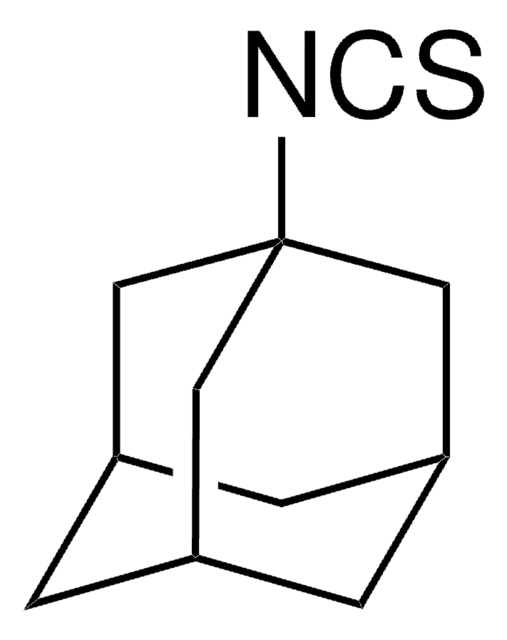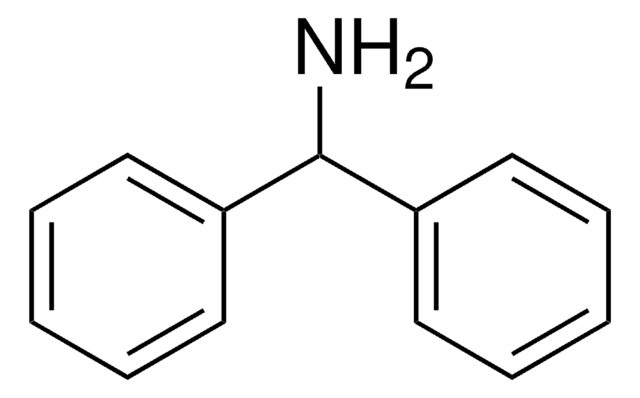About This Item
Polecane produkty
Próba
97%
mp
144-146 °C (lit.)
ciąg SMILES
O=C=NC12C[C@H]3C[C@H](C[C@H](C3)C1)C2
InChI
1S/C11H15NO/c13-7-12-11-4-8-1-9(5-11)3-10(2-8)6-11/h8-10H,1-6H2/t8-,9+,10-,11-
Klucz InChI
VBHCPGFCIQDXGZ-BIBSGERRSA-N
Powiązane kategorie
Opis ogólny
Zastosowanie
- adamantyl-functionalized nanoparticles, via thiol-isocyanate reaction of thiol-modified nanoparticles1 4-[3-(aryl or -cycloalkyl)ureido]butyryl compound
- 4-(3-adamantan-1-yl-ureido)butyric acid, via reaction with 4-aminobutanoic acid in DMF
- 4-(3-adamantan-1-yl-ureido)butyryloxy compound
- 12-(3-adamantan-1-yl-ureido) dodecanoic acid (AUDA)
- adamantyl-phenylsulfonamide ureas
- 1-adamantan-1-yl-3-(hydroxyalkyl)ureas, via reaction with with hydroxyalkylamines
Hasło ostrzegawcze
Danger
Zwroty wskazujące rodzaj zagrożenia
Zwroty wskazujące środki ostrożności
Klasyfikacja zagrożeń
Acute Tox. 4 Dermal - Acute Tox. 4 Inhalation - Acute Tox. 4 Oral - Eye Irrit. 2 - Resp. Sens. 1 - Skin Irrit. 2 - Skin Sens. 1 - STOT SE 3
Organy docelowe
Respiratory system
Kod klasy składowania
11 - Combustible Solids
Klasa zagrożenia wodnego (WGK)
WGK 3
Temperatura zapłonu (°F)
Not applicable
Temperatura zapłonu (°C)
Not applicable
Środki ochrony indywidualnej
dust mask type N95 (US), Eyeshields, Gloves
Certyfikaty analizy (CoA)
Poszukaj Certyfikaty analizy (CoA), wpisując numer partii/serii produktów. Numery serii i partii można znaleźć na etykiecie produktu po słowach „seria” lub „partia”.
Masz już ten produkt?
Dokumenty związane z niedawno zakupionymi produktami zostały zamieszczone w Bibliotece dokumentów.
Klienci oglądali również te produkty
Nasz zespół naukowców ma doświadczenie we wszystkich obszarach badań, w tym w naukach przyrodniczych, materiałoznawstwie, syntezie chemicznej, chromatografii, analityce i wielu innych dziedzinach.
Skontaktuj się z zespołem ds. pomocy technicznej












